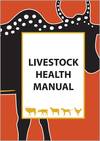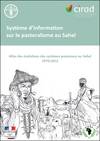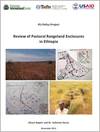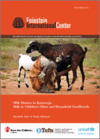An interdisciplinary team of researchers from the Health for Animals and Livelihood Improvement (HALI) Project collaborated with pastoralist communities living near the south-eastern border of Ruaha National Park in Tanzania to identify key diseases impacting livestock herd health. This information was then used to create this illustrated livestock health manual. This is particularly useful at the local level where it can be understood by most people in the communities where literacy rates may vary.
Year of publication: 2012Organization: Auteurs individuels
Topic: Économie, Sécurité alimentaire, Value addition
Language: English
Type of document: Technique
Geographical coverage: Afrique orientale
Water development enables the provision of a vital resource to sustain humans, animals and plants in Ethiopia’s arid areas. This report present an overview of water development in Ethiopia’s pastoral regions over the past 40 years.
Year of publication: 2012Organization:
Topic: Sécurité alimentaire, Régime foncier, Services sociaux
Language: English
Type of document: Technique
Geographical coverage: Afrique orientale
This publication presents an analysis of women’s role in the sustainable use, development and conservation of animal genetic resources. The importance of small-scale famers and pastoralists as custodians of these resources is well recognized, but has never previously been disaggregated by gender. The differential roles of men and women have largely been neglected in studies of animal genetic resources management, but by piecing together several strands of argument and indirect evidence it can be concluded that women are the main guardians of livestock diversity.
Global trends in the livestock sector – particularly the shift from subsistence-oriented to market-oriented production, the sedentarization and disintegration of pastoralism, and the emergence of demand for niche market products – are analysed from the perspective of their influence on gender roles in livestock keeping and animal genetic resources management. Likewise, women’s role in the reproductive economy is analysed from the perspective of how this influences the type of livestock they keep.
Case studies from many regions of the world illustrate that while to a degree women acquire their role as guardians of diversity by default because of global trends, many also make an active and conscious contribution to the management of animal genetic resources.
Year of publication: 2012Organization: Organisation des Nations Unies pour l'alimentation et l'agriculture (FAO)
Topic: Services environnementaux, Jeunesse et égalité des sexes
Language: English
Type of document: Technique
Geographical coverage: Global
Depuis une trentaine d’années, l’élevage pastoral sahélien traverse de grands changements institutionnels, socio-économiques, climatiques et agroécologiques qui bouleversent le mode de vie des populations rurales ; celles-ci deviennent de plus en plus vulnérables. Le SIPSA et ses partenaires ont collecté et analysé pour cet atlas des produits informationnels qui corroborent ces tendances évolutives, mais révèlent aussi l’insuffisance de données historiques et d’indicateurs spécifiques qui permettent d’affiner les analyses et de caractériser, anticiper et gérer les crises pastorales. Durant la période 1972-2012, il se dégage les tendances générales.
Year of publication: 2012Organization: Organisation des Nations Unies pour l'alimentation et l'agriculture (FAO), Centre de coopération internationale en recherche agronomique pour le développement (CIRAD)
Topic: Économie, Services environnementaux, Sécurité alimentaire
Language: English, Français
Type of document: Technique, Cartes
Geographical coverage: Afrique occidentale, Afrique centrale
Mongolia’s reindeer herders and their taiga homeland are today facing unprecedented challenges from unregulated mining, forest logging, loss of access to natural resources, tourism, and climate change. There is an urgent need to ensure that conditions are in place to maintain reindeer husbandry as a resilient and sustainable livelihood.
Year of publication: 2012Organization: Programme des Nations Unies pour l'environnement (UNEP)
Topic: Économie, Services environnementaux, Peuples autochtones
Language: English
Type of document: Technique
Geographical coverage: Asie centrale
This study report aims to map the grazing corridors for the Garre and Degodia clans in Wajir and Mandera Counties in Northern Kenya and Moyale, Dolo Ado, Filtu and Hudet Woredas in Southern Ethiopia, as part of the mechanism of minimizing drought risks. It presents the major problems associated with drought risk reduction strategies in the project area. The report calls for a more pro-active approach in addressing disaster risk reduction issues for the arid land inhabitants in the Horn of Africa.
Year of publication: 2011Organization: Auteurs individuels
Topic: Changement climatique, Résilience
Language: English
Type of document: Technique, Cartes
Geographical coverage: Afrique orientale
Access to productive rangeland has long been a critical issue affecting pastoralists in Ethiopia. This work facilitated a review of a specific set of changes to rangeland management in Ethiopia, that is, the establishment of rangeland enclosures. The review considered the development of rangeland enclosures in Ethiopia and examined how different actors perceive the likely impact of enclosures on pastoralist livelihoods. Central to the review was the need to understand impact by pastoralist wealth group. The review process involved a literature review, field assessments in Borana and Somali pastoralist areas to understand current perceptions of the benefits of enclosures, particularly for poorer pastoralists, and finally, local stakeholder review workshops.
Year of publication: 2011Organization:
Topic: Économie, Régime foncier
Language: English
Type of document: Technique
Geographical coverage: Afrique orientale
The Karamoja region of northeastern Uganda has seen a precipitous decline in access to and availability of animal milk at the household level in recent years. This change has affected livelihoods, food security, and the nature of market exchanges, but has had the greatest impact on the diets and nutrition of young children.
The objective of the study was to understand how milk had changed in the diets of children under age five and in household livelihood strategies. To that end, the project sought to understand the sources of milk coming into the household, the uses of milk within households, and the role milk played within the diets of children. The project then examined how these factors had changed over time.
The findings showed that households have seen a sharp reduction in milk from their own herds, and seek to compensate for this loss with purchased milk. Overall milk supply within households in all areas has drastically reduced due to multiple years of drought, livestock loss, and the erosion of animal-based livelihoods.
Year of publication: 2011Organization:
Topic: Sécurité alimentaire
Language: English
Type of document: Scientifique
Geographical coverage: Afrique orientale









